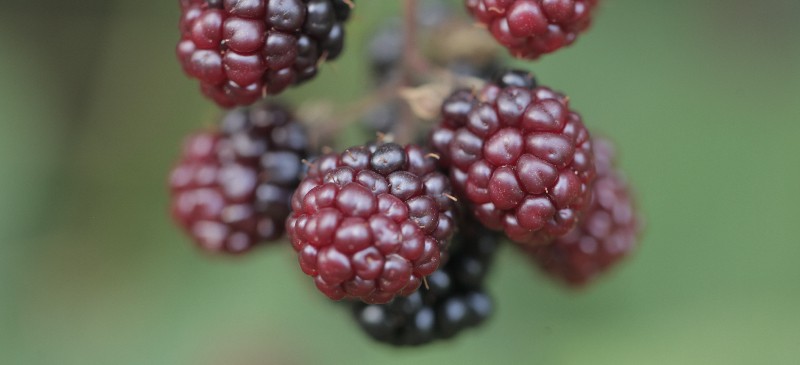This Dr. Axe content is medically reviewed or fact checked to ensure factually accurate information.
With strict editorial sourcing guidelines, we only link to academic research institutions, reputable media sites and, when research is available, medically peer-reviewed studies. Note that the numbers in parentheses (1, 2, etc.) are clickable links to these studies.
The information in our articles is NOT intended to replace a one-on-one relationship with a qualified health care professional and is not intended as medical advice.
This article is based on scientific evidence, written by experts and fact checked by our trained editorial staff. Note that the numbers in parentheses (1, 2, etc.) are clickable links to medically peer-reviewed studies.
Our team includes licensed nutritionists and dietitians, certified health education specialists, as well as certified strength and conditioning specialists, personal trainers and corrective exercise specialists. Our team aims to be not only thorough with its research, but also objective and unbiased.
The information in our articles is NOT intended to replace a one-on-one relationship with a qualified health care professional and is not intended as medical advice.
What Is a Marionberry? Benefits, Nutrition, Uses & How It Compares vs. Blackberries
March 4, 2023

If you’re native to Oregon, you likely know all about marionberries. They were developed in the 1950s as a blackberry cultivar and offer similar health benefits, along with a sweet, more complex flavor. Then in 2017, marionberry pie was designated the official state pie of Oregon, and because marionberries are so soft, they are rarely shipped out of state when fresh.
If you can get your hands on marionberry fruit, it can be added to baked goods, salads, sauces and beverages for an added tart yet sweet taste. Plus, the fruit is high in fiber, contains health-boosting antioxidants and helps boost immune system function, too.
What Is a Marionberry?
A marionberry is a cultivar of blackberry that was developed by the United States Department of Agriculture (USDA) breeding program in cooperation with Oregon State University in the 1950s. It is named after Marion County in Oregon, where it was first developed, and is a cross between Chehalem and Olallie blackberries. Sometimes called the “king of blackberries,” marionberries are grown exclusively in Oregon and typically only available when they’re in season.
Marionberries are known for their dark color and sweet, juicy flavor. They’re larger and sweeter than common blackberries and have a softer texture.
Like other berries, marionberries are commonly used for making parfaits, jams, jellies, pies and other desserts.
Marionberries are the most common blackberry grown in Oregon, with 28 million to 33 million pounds produced every year. They are typically in season from late June to early August.
Marionberry vs. Blackberry
Marionberries and blackberries are closely related, as marionberries are a specific cultivar of blackberries that were specifically developed. They do have some key differences, however, including the following:
- Flavor: Marionberries have a sweeter, more complex flavor than other types of blackberries. They also have a hint of tartness and earthiness.
- Shape and color: Compared to blackberries, marionberries are larger and more elongated, and they have a distinctive deep purple color when ripe.
- Texture: Marionberries are softer and juicier than other types of blackberries.
- Availability: Marionberries are primarily grown in Oregon and the Pacific Northwest region of the U.S. during summer months. Common blackberries are grown in many regions around the world and are available commercially year round.
Nutrition
Marionberries are also a good source of antioxidants, including anthocyanins, the compounds that give them their deep purple color. Anthocyanins are associated with several potential health benefits, including reduced inflammation and improved cardiovascular health.
These berries are also a good source of fiber and vitamin C, which rank them among the healthiest berries to eat.
In addition, marionberry nutrition contains some carbs, protein, vitamin K, manganese, potassium and magnesium.
Benefits/Uses
Marionberries, like huckleberry, blackberry and other types of berries, are a nutritious food that offer many potential health benefits. Here are some of the potential benefits of consuming marionberries:
1. Rich in Antioxidants
Marionberries are a good source of antioxidants and help protect the body against free radical damage and inflammation that may lead to chronic disease. They contain phenolics and anthocyanins, a type of flavonoid that has been shown to help reduce the risk of heart disease, improve immune function, boost brain health and enhance exercise performance.
2. High in Fiber
Marionberries are a good source of dietary fiber. Fiber is important for digestive health and can help lower cholesterol levels and regulate blood sugar levels. Research suggests that most Western diets don’t include enough fiber, but consuming fresh foods like marionberries is a sure way to promote digestive regularity and healthy metabolic processes.
3. May Boost Immunity
Marionberries are high in vitamin C, which is an essential micronutrient that helps boost immune system function and protects us against infections and illnesses. Research shows that eating vitamin C foods contributes to various cellular functions in the body and helps prevent infections and increased inflammation.
4. May Improve Brain Function
Some studies indicate that the antioxidants, such as anthocyanins in marionberry, may help improve cognitive function and reduce the risk of age-related cognitive decline. These antioxidants protect memory, coordination and neural function.
5. May Support Heart Health
The fiber and antioxidants found in marionberries may help lower the risk of heart disease, reduce inflammation and improve blood pressure levels. Research shows that high fiber intake is associated with a reduced risk of developing cardiovascular disease and other cardiometabolic risk factors.
How to Use (Recipes)
Marionberries have a complex tart, yet sweet flavor and tender texture. In fact, they are so soft that the fresh berries won’t survive being shipped. That’s why they can be more difficult to find than other types of blackberries and may be more expensive due to their limited availability.
They can be used in a variety of recipes, including baked goods, desserts, savory dishes and beverages. Here are some ideas for using marionberries in your cooking:
- Jams and jellies: Marionberries are perfect for making jams and jellies because they have a high pectin content and a sweet, rich flavor. Marionberry jam can be spread on toast or biscuits for added sweetness.
- Pies and tarts: Marionberries make a delicious filling for pies and tarts, which is why marionberry pie is the designated pie in Oregon. Use this Gluten-Free Homemade Berry Tart Recipe for inspiration.
- Cobblers and crisps: The tart and sweet berries can be used in cobblers and crisps. Try making a marionberry cobbler with a crunchy oat topping. You can use this Easy Blueberry Cobbler Recipe for inspiration.
- Salads: Marionberries can add a sweet and tangy flavor to salads. Try adding them to spinach with feta cheese and a balsamic vinaigrette.
- Sauces: Marionberries can be pureed and used to make a sweet and tangy sauce that pairs well with pork, chicken or duck.
- Beers and liqueur: In Oregon, marionberries are used to make flavored liqueur and beers, including vodka and whiskey that’s sold at local distilleries.
Here are some recipes with marionberry to get you started:
Risks and Side Effects
Marionberries are generally considered safe and are unlikely to cause side effects when consumed in moderate amounts as part of a healthy diet. However, some people may be allergic to berries or have an intolerance to certain components of the fruit, which could lead to adverse reactions.
If you experience allergy symptoms such as itching, hives, swelling or difficulty breathing, stop eating marionberry immediately, and seek medical attention if needed.
Eating large amounts of marionberries or any other type of fruit may cause digestive issues, such as bloating, gas or diarrhea, particularly in individuals who are sensitive to high-fiber foods, so stick to small or moderate amounts at a time. Marionberries also contain natural sugars and carbohydrates, which can cause blood sugar levels to rise quickly in some people. This may be a concern for individuals with diabetes or insulin resistance.
Marionberries contain compounds that can interact with certain medications, particularly blood thinners, such as warfarin. If you are taking medication, it is important to speak with your health care provider before adding marionberries or any other new food to your diet.
Conclusion
- A marionberry is a cultivar of blackberry that was developed by the USDA breeding program in cooperation with Oregon State University in the 1950s.
- It is named after Marion County in Oregon, where it was first developed, and is a cross between Chehalem and Olallie blackberries.
- Marionberries have a tart, sweet and slightly earthy taste. They are soft and can be easily added to baking recipes, salads and beverages.
- Marionberry is a good source of antioxidants, fiber and vitamin C.






